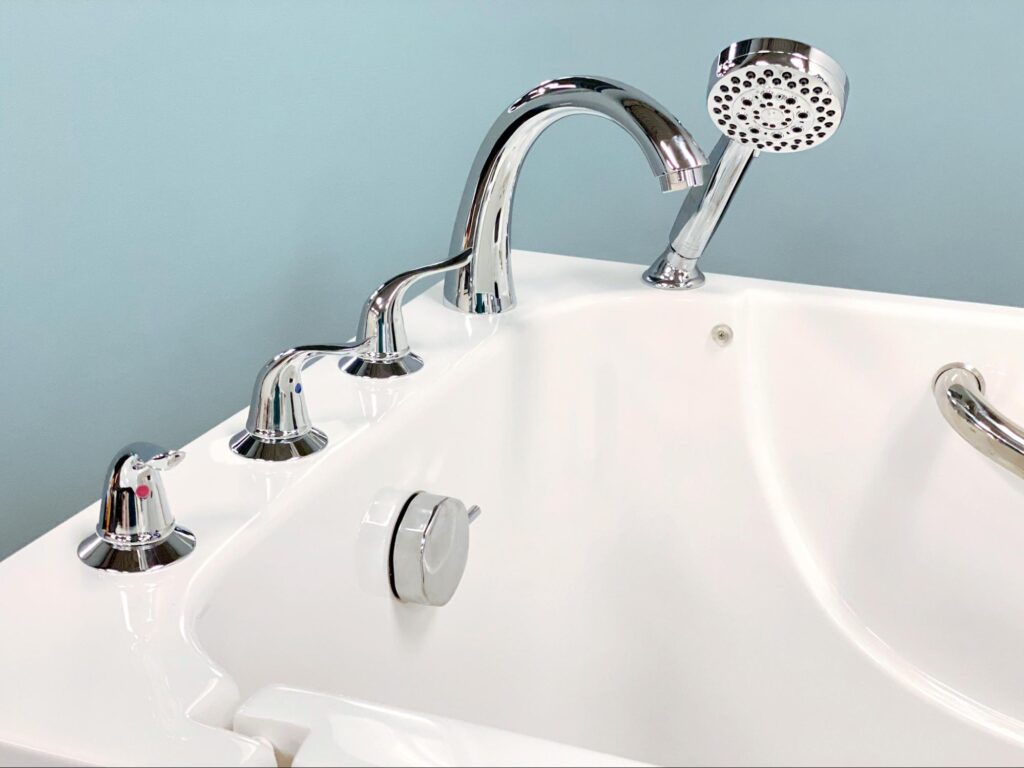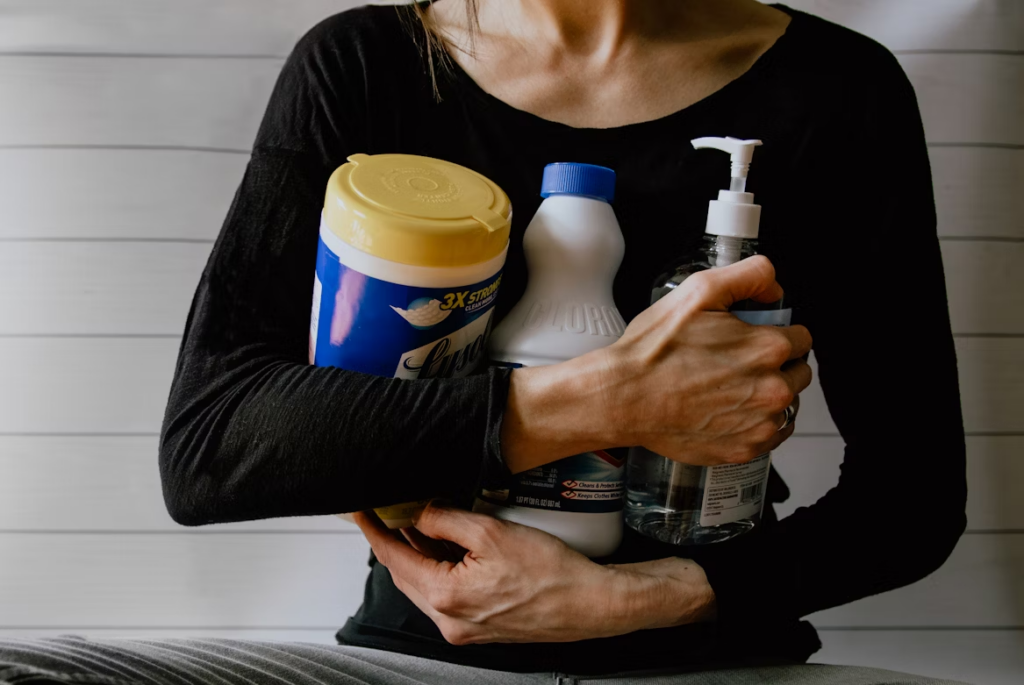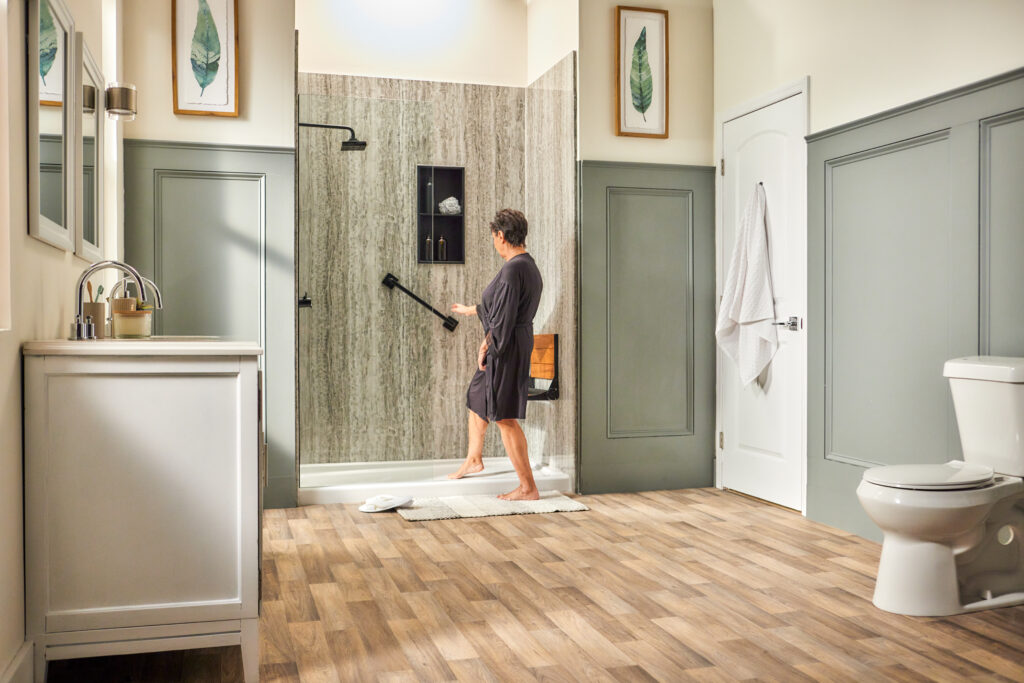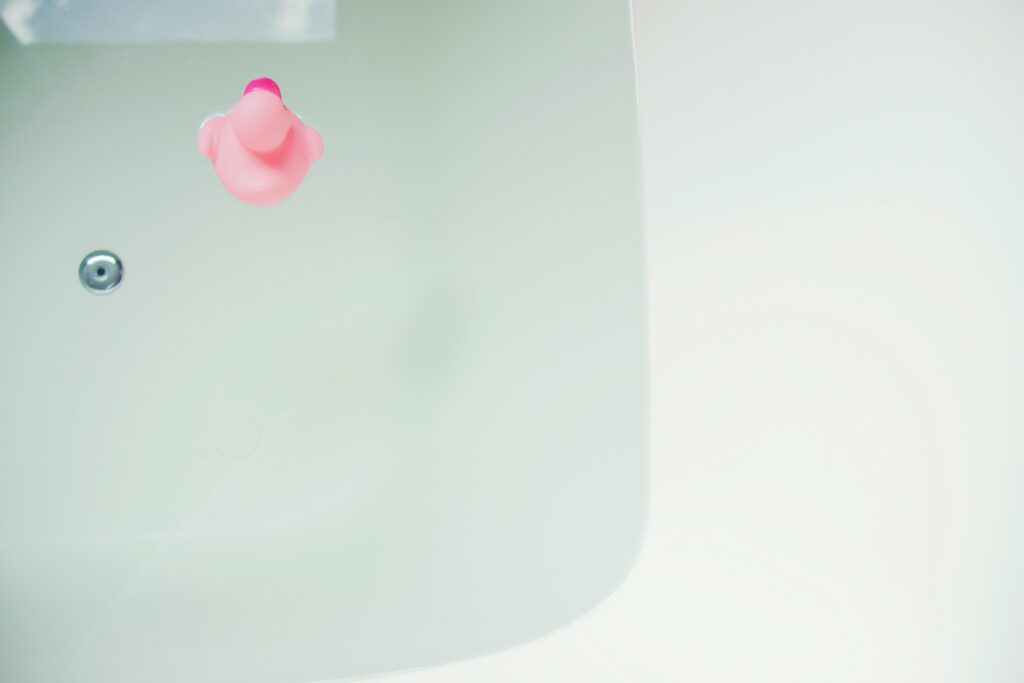
Acrylic is the primary choice of material for most bathtubs and tub showers, with its sleek look and non-porous surface appealing to many homeowners. While maintaining your acrylic tub in a pristine condition could be arduous, it doesn’t have to weigh you down. Read on to explore the best way to clean an acrylic tub and keep it looking brand-new for years to come.
Understanding Acrylic Material
Acrylic tubs are made of sheets of lightweight yet durable plastic. First, acrylic sheets are heated, which makes them soft and easy to work with. Then, they are vacuum-formed in mold, and, finally, reinforced with layers of fiberglass and resin to prevent cracks and extend the longevity of your tub.
Characteristics of Acrylic Used in Bathtubs
Acrylic used in bathtubs is resistant to breakage and retains heat well. An average acrylic bath weighs around 90 pounds. Reinforced with fiberglass and other complementary materials, it’s durable and can last for over 15 years. Plus, the smooth and pore-free surface of such a tub makes regular maintenance much easier.
Benefits of Acrylic Tubs
Acrylic bathtubs offer an excellent balance of affordability, comfort, and resilience. Here are the key advantages:
- Affordability: Acrylic tubs are more cost-effective than porcelain or cast counterparts.
- Resistant to breakage and limescale: Acrylic surfaces are less prone to fading, chipping, scratching, and limescale.
- Low maintenance: The smooth surface of an acrylic tub streamlines the cleaning process.
- Modern aesthetic: Available in various styles with a glossy, elegant finish that complements any bathroom decor.
Common Issues with Improper Cleaning
Neglecting a proper acrylic bathtub cleaning routine shrinks the lifespan of your tub. This leads to premature wear, poorer appearance, loss of heat-retaining qualities, mold build-up, and unsightly stains.
For example, while a mild cleaning solution can effectively remove dirt and bacteria, it may not be strong enough to tackle stubborn limescale or mold buildup. For these, targeted cleaners or natural alternatives like vinegar may be necessary. At the same time, overly abrasive products will break down the acrylic surface over time. That’s why if you want to keep your bathtub intact for as long as possible, sticking with a few simple yet fundamental principles is key.

General Cleaning Guidelines
Before anything, ensure you know how to clean an acrylic tub. Read on to get a clearer understanding of how often to do that, what products to prepare, and what tools to avoid.
Recommended Cleaning Frequency
Regular maintenance for tubs is all about consistency. Daily and monthly cleaning routines are essential for a glossy finish. A simple daily routine is a shortcut to keeping your acrylic tub spotless and avoiding dirt build-up. A more thorough clean-up on a monthly basis will help address any deeper issues, such as hidden mold or mineral deposits.
Tools and Materials to Avoid
Using harsh materials and abrasive cleaning products won’t add years to your tub’s lifespan. Conversely, it’s a fast way to deteriorate its look and break down the acrylic surface. To avoid such outcomes, steer clear of scouring pads, steel wool, and hard-bristled brushes that could scratch the acrylic surface and cause permanent damage.
Make sure the cleaning solutions you plan on using don’t contain bleach, ammonia, acetone, or any other type of rough ingredients. Remember that safe cleaning products don’t feature any of these. While they might eliminate stubborn stains, they often lead to discoloration and considerable deterioration of your tub’s surface.
Safe Cleaning Tools and Products
Effective acrylic bathtub cleaning starts with gathering the right tools and products. Ensure you have the following on hand:
- Tools: Soft-bristled brushes, soft sponges, a terry cloth, a spray bottle, and gloves.
- Commercial cleaning solutions: Acrylic-friendly cleaners, dish soap, rust stain removers, and mildew removers.
- Over-the-counter cleaning products: White vinegar and baking soda.

Step-by-Step Cleaning Process
For a daily implementation, consider the following acrylic bathtub cleaning routine:
- Rinse after each use: Remember to rinse the bath unit with warm water after every bath to stop dirt, soap scum, and residue from hygiene products from building up. This step helps keep your tub clean and prevents grime from hardening over time.
- Apply an acrylic-safe shower cleaner: Apply a thin layer of gentle dish soap or an acrylic-safe cleaner formulated for daily use.
- Rinse the detergent off: Thoroughly rinse the surface with a sufficient amount of water.
Consider a deeper safe cleaning routine once a month for better results. While the process is similar to what you’d do daily, there are a few differences worth noting.
- Start with a good rinse: To get started, rinse your tub with water to remove any soap scum or other superficial dirt build-up.
- Apply an acrylic-friendly detergent: Cover the surface of your tub with a generous layer of an acrylic-safe cleaner (remember to avoid abrasive cleaners) or a mixture of white vinegar and lukewarm water (1:1). Leave it for 10-15 minutes.
- Scrub with a soft-bristled brush or sponge: After letting the detergent sit for 10-15 minutes, use a soft-bristled brush to scrub the surface gently. Pay attention (and apply appropriate force) to those areas that appear to have been stained or covered in rust.
- Rinse thoroughly again: Once the surface has been scrubbed, rinse your tub thoroughly with water.
- Wipe clean with a dry terry cloth: To keep the acrylic tub shiny, use a terry cloth to wipe it clean.
Dealing with Stubborn Stains
Dealing with unsightly stains that don’t seem to get off is a matter of time, effort, and proper cleaning products. Yet, if trusted acrylic-friendly cleaners, dish soap, and rust stain removers fail to do the job, give a two-ingredient homemade concoction a try.
Prepare a mixture of baking soda and dish soap in equal proportions. Apply the solution to a soft-bristled brush and scrub the stained spots of your bathtub. After a few minutes of scraping off the stain in a circular motion, let the mixture sit for another 10-15 minutes for optimal results. Then, rinse it off with water thoroughly.

Preventative Maintenance Tips
Acrylic bathtub cleaning gets much easier if you take preventative maintenance measures seriously. Follow the tips below to keep your bathtub looking pristine for longer:
- Improve ventilation: Reduce humidity and prevent mold growth by using an exhaust fan or keeping the bathroom door open after bathing.
- Wipe down excess moisture: After each use, use a microfiber cloth or soft towel to dry the surface. This helps prevent water spots, soap scum, and limescale buildup.
- Use a bath mat or non-slip stickers cautiously: If using a bath mat, choose one with gentle suction cups to avoid surface damage. Avoid rubber mats with harsh adhesives that can leave a residue.
- Protect against hard water stains: If you have hard water, consider using a water softener or a mild vinegar rinse (once a week) to prevent mineral deposits.
- Polish occasionally for extra shine: Apply an acrylic-safe polish every few months to maintain the glossy finish and add a layer of protection.
- Check for early signs of wear: Regularly inspect for small scratches or discoloration. Addressing minor damage early prevents more extensive repairs later.
Common Mistakes to Avoid
Being inconsistent with your cleaning routine is the primary mistake when trying to keep the surface of your tub well-maintained. Neglecting a daily clean-up makes it harder to deal with the build-up of grime later.
A wrong cleaning toolkit is another common mistake. Opting for harsh materials doesn’t promise immediate removal of stubborn stains. What it does, though, is deteriorate the surface of your tub. Remember that avoiding these mistakes is critical for making a regular maintenance routine more effective.
Conclusion
The best way to clean an acrylic tub is to keep a regular daily and monthly routine to enjoy a nice-looking bathroom for as long as possible. Apart from following a routine, the key is to swap abrasives for gentle cleaners formulated specifically for acrylic surfaces. Plus, use soft-bristled sponges and brushes to maximize the results.
If you’re considering upgrading your bathroom with a durable, stylish acrylic tub, Statewide Remodeling has the expertise to guide you every step of the way. From selection to seamless installation, our team knows everything about acrylic baths and will help you create a space that’s both beautiful and easy to maintain. Get in touch today to start your bathroom transformation!
Frequently Asked Questions
How do I get my acrylic tub white again?
To get your acrylic tub white again, mix baking soda and dishwashing detergent in a 1:1 ratio. Apply the concoction to a soft-bristled brush and scrub the surface of your bathtub. Let the mixture sit for up to 15 minutes and rinse it with water.
What are the best tools for cleaning an acrylic tub?
The best tools for acrylic bathtub cleaning are made of soft materials. Opt for soft-bristled brushes, soft sponges, and a microfibre cloth to keep your tub spotless. Avoid using abrasive scrubbers, steel wool, or rough pads, as they can scratch and dull the acrylic surface over time.
How can I prevent scratches on my acrylic bathtub?
The best way to prevent scratches on your acrylic bathtub is to stay away from tools made of harsh materials. Don’t use scouring pads, steel wool, and hard-bristled brushes as they deteriorate the surface of your bath. Also, remember that harsh chemicals and scrubbing too forcefully can also contribute to scratches over time.
Can I use baking soda to clean an acrylic bathtub?
Yes, you can use baking soda as one of the ingredients to clean an acrylic bathtub. Baking soda is a gentle cleaner that you can safely sprinkle over the surface of your tub to get rid of stubborn stains. However, you should use it only occasionally — not regularly.
Are bleach or ammonia safe to use on acrylic bathtubs?
Bleach and ammonia are not safe for the acrylic surface of your bathtub. More than that, these products are highly abrasive, causing extensive damage and breaking down acrylic over time.
What not to use on an acrylic bathtub?
Do not use abrasive cleaning products on an acrylic bathtub. Avoid cleansers that have bleach, ammonia, acetone, or any other type of harsh chemical ingredients. These often do more harm than good and lead to a considerable deterioration of your tub’s surface.
What’s the best way to keep my acrylic tub shiny?
The best way to keep an acrylic tub shiny is to keep it clean every day. After each use, rinse the surface with water to wash away any dirt and residue from hygiene products.
Consider applying gentle cleansers daily to avoid any grime accumulation.
How do I maintain my acrylic tub’s appearance over time?
To maintain your acrylic tub’s appearance over time, follow regular maintenance routines on a daily and monthly basis. After each time you use your tub, rinse it with water to wash away any soap scum and product residue. Plus, stick to a consistent monthly deep clean to remove stains from acrylic tubs, alongside any signs of growing mold.
What is the lifespan of an acrylic tub?
The lifespan of an acrylic tub ranges from 10 to 15 years. The more consistent you are with keeping it clean, the longer it will serve you. Proper maintenance, such as using non-abrasive cleaners and preventing hard water buildup, can help preserve its glossy finish and structural integrity over time.



.png)
.png)



